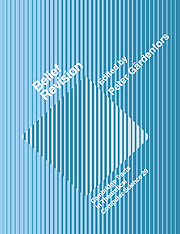Book contents
- Frontmatter
- Contents
- Belief revision: An introduction
- Reason maintenance and belief revision: Foundations versus coherence theories
- Syntax based approaches to belief revision
- A dyadic representation of belief
- On the logic of theory change: More maps between different kinds of contraction functions
- Belief change and possibility theory
- On the difference between updating a knowledge base and revising it
- Planning from first principles
- Autonomous belief revision and communication
- Conditionals and knowledge-base update
- Index
Autonomous belief revision and communication
Published online by Cambridge University Press: 21 September 2009
- Frontmatter
- Contents
- Belief revision: An introduction
- Reason maintenance and belief revision: Foundations versus coherence theories
- Syntax based approaches to belief revision
- A dyadic representation of belief
- On the logic of theory change: More maps between different kinds of contraction functions
- Belief change and possibility theory
- On the difference between updating a knowledge base and revising it
- Planning from first principles
- Autonomous belief revision and communication
- Conditionals and knowledge-base update
- Index
Summary
INTRODUCTION
This chapter describes a model of autonomous belief revision (ABR) which discriminates between possible alternative belief sets in the context of change. The model determines preferred revisions on the basis of the relative persistence of competing cognitive states. It has been implemented as ICM (increased coherence model); a belief revision mechanism encompassing a three-tiered ordering structure which represents a blend between coherence and foundational theories of belief revision.
The motivation for developing the model of ABR is as a component of a model of communication between agents. The concern is choice about changing belief. In communication, agents should be designed to choose whether as well as how to revise their beliefs. This is an important aspect of design for multi-agent contexts as open environments (Hewitt, 1986), in which no one element can be in possession of complete information of all parts of the system at all times. Communicated information cannot therefore be assumed to be reliable and fully informed. The model of ABR and system ICM, represent the first phase in the development of a computational model of cooperative, yet autonomously determined communication. The theory of ABR and communication is explicated in section 2.
Section 3 follows with an outline of the problem of multiple alternative revisions, and a discussion of preference and strength of belief issues from an AI perspective. This section includes the relevant comparative and theoretical background for understanding the model of ABR described in section 4.
- Type
- Chapter
- Information
- Belief Revision , pp. 220 - 246Publisher: Cambridge University PressPrint publication year: 1992
- 32
- Cited by

